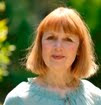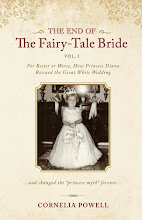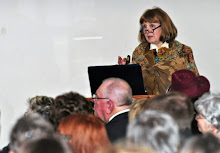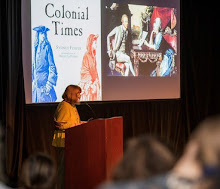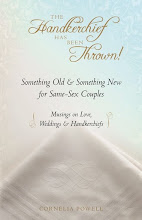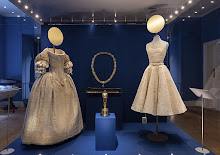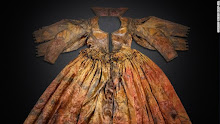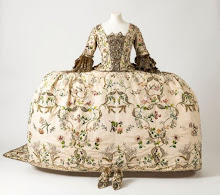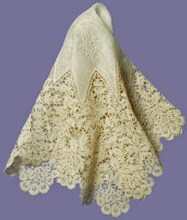We
are living in momentous times when women are not just making history, but
reshaping history’s narrative. I love reading about women of an earlier era who
made a difference, whose courage pushed them forward—when you can find yourself
in their story. So I was delighted to read about “The
Amazing Women on Titanic”—a two-years-in-the-making
event highlighting stories of 19 trailblazing women on board the legendary ship
(currently at the Titanic Museums in both Branson, Missouri, and Pigeon Forge,
Tennessee.)
Perhaps our fascination with the luxuriously-appointed
yet ill-fated RMS Titanic—with a
passenger list of some of the period’s most celebrated names and sinking on its
heralded maiden voyage in 1912—is as much to do with its compelling
life-and-death saga as it is with how the tragedy dramatically punctuated the
ending of a gilded era. Just as a bold new century was breaking open, with an
outdated culture crumbling, women were to play their part in reshaping a
disordered world.

“The
Amazing Women on Titanic” features
women whose lives echo today’s headlines, as well as our own everyday dreams. There
was Edith Chibnall, first-class
passenger from England, who had marched with suffragette leader Emmeline
Pankhurst in the famous “Black Friday” protest on Parliament in 1910; crew
member Violet Jessup who survived
this and another ship disaster to write a no-holds-barred book about a working
woman’s life at sea; ground-breaking Mennonite missionary Annie Funk, second-class passenger from Pennsylvania who didn’t
survive, had founded the first school for girls in Janjgir, India—later named
in her memory; and Dorothy Gibson, famous
model and pioneering American silent-film actress, the highest paid of her time.
Let’s
meet other “amazing” Titanic women:
Best-selling author, well-known journalist,
travel writer, and single mother of two, Helen
Churchill Candee, who cut short a European research trip after receiving
word her son had been injured, booked first-class passage on the Titanic to come back home to the United States.
One of the nation’s first professional female interior decorators, Helen also
wrote eight best-selling books, including How
Women May Earn a Living.
Helen had to walk with a cane for a year after
surviving the Titanic; she severely
fractured her ankle when escaping the ship yet helped row her lifeboat to
safety through the icy Atlantic waters. A board member of the National Woman
Suffrage Association, Helen used her fame and political connections to further
the cause, then in 1913 she led a Votes for Women parade—with 10,000 estimated
participants—down Pennsylvania Avenue on horseback to the steps of the U.S.
Capitol, the day before Woodrow Wilson’s inauguration. (It was seven more years,
however, before the 19th Amendment was passed then ratified, giving
women the right to vote.)

Elsie Bowerman, 22-year-old
first-class passenger, became one of the first women barristers in Britain and
first woman to present a case at the Old Bailey courthouse and win. Elsie
served as a representative of the United Nations’ Secretary General, serving on
the UN’s Commission on the Status of Women. On board the Titanic with her mother, a militant activist in the suffrage
movement in England, Elsie went on to lead women’s suffrage groups until all
women won the right to vote there in 1928.
American fashion journalist, importer and
stylist, Edith Rosenbaum, 32, had
just reported on the fashions at the Paris races for Women’s Wear Daily when she boarded the Titanic in Cherbourg. (Reluctantly because a fortune teller warned
her of trouble ahead!) On the night of the sinking, Edith carried a music box
in the shape of a toy pig, her good-luck token, and used it to calm frightened
children in her lifeboat, twisting its tail to play a popular tune.
Edith became one of the first female war
correspondents, reporting from the trenches in World War I (many Titanic survivors were involved in this
brutal and game-changing war.) She later changed her last name to Russell when
people with “German sounding names” were banned from the couture houses in
Paris. During her 95 years, as Titanic expert Hugh Brewster noted, Edith
traveled extensively, weathering other catastrophes from car accidents to
tornadoes: “I’m accident prone,” she once said. “I’ve had every disaster but
bubonic plague and a husband.”

For the spirited Irene (René) Harris—on board with her
husband Harry, a leading New York theatrical producer—being on the Titanic had been a joyous experience.
However, she slipped on the grand staircase before the formal dinner on Sunday evening,
fell and broke her arm (her heel may have gotten caught in her fashionably
narrow hemline.) Hours later René had to be lifted and carefully placed in a
lifeboat—she made it, husband Harry did not. René took over the family theater
business back in New York, becoming the first woman producer of Broadway plays
and musicals, backing or managing more than 200 during her two-decade career.

American Margaret
Brown—wife of a Colorado millionaire, a miner who struck it very rich—had
been in Paris when she received a wire that her grandson was seriously ill and
was heading home to be with her family. Margaret was a powerful advocate for
human and women’s rights, worked tirelessly for suffrage and literacy for
children, historic preservation and, after the accident, the Titanic Survivors’ Committee.
Margaret, at age 44, was called the great
heroine of the disaster, taking charge of her lifeboat, organizing the other
women to row to keep warm during the frigid night, and guiding them to the
rescue ship the next morning. She would become even more famous after her death
when Broadway and Hollywood produced musicals based on her life, calling her
“unsinkable” and renaming her “Molly.”

But
the most famous of the “amazing” women on board Titanic (and the elegant centerpiece of the Titanic Museums’
exhibits in Branson and Pigeon Forge) was Lucy,
Lady Duff Gordon. The celebrated British couturiere who, under the name of Lucile, “was known for her
innovative and provocative designs plus savvy self-promotion, attracting
royalty, socialites and entertainment figures to her coveted brand—women whose
influence set the fashions of the day,” explains her biographer (and my costume
buddy) Randy Bryan Bigham. “She helped usher in sexy lingerie, looser corsets,
and the modern runway show,” he shares in Lucile
– Her Life by Design.

To
get a sense of the unprecedented scope of Lucy Duff Gordon’s achievements,
Bigham remarked that “Lucile was one of the first important female haute
couture designers, the first major London-based couturiere, and the first
leading designer to open full scale branches in America. She also was the first
top name in fashion to do lower-priced lines and to launch perfumes and
cosmetics.” (Lucile was so famous during this time, she
even got a mention on Downton Abbey,
the wildly popular period costume drama—its storyline beginning with the news
of Titanic’s sinking!)
By
the time Lady Duff Gordon boarded the RMS Titanic
in April of 1912 with her husband Sir Cosmo Duff Gordon and her secretary, known
as “Franks” (they all survived, but there was a whiff of scandal), Lucy was
acclaimed and wealthy—“a celebrity in her own right” with Lucile salons in
London, Paris, New York and Chicago, explained Bigham. She was traveling to New
York incognito, away from the usual media spotlight that followed her, to be
able to rest and relax on the grand luxury liner. Fate, however, had other
plans.

For
a rare treat, presented into early 2019 as part of “The Amazing Women on Titanic” exhibits, a collection of
original Lucile designs is on display: beautiful evening gowns, wedding dresses
(worn by the rich and famous), lingerie, accessories (including two fabulous
hats), and charming ephemera—most items from Randy Bryan Bigham’s own
collection. (Other garments and accessories from FIDM Museum in Los Angeles;
Canada’s Fashion History Museum in Ontario; and private collectors Inger Sheil
and Lisa Kominek.) A lovely way to honor all women of the era.
I don’t know about you, but reading about
women of history, especially women unknown to me, seems to infuse modern life
with a certain quality, like a fresh perspective and vitality. It’s as though
bringing their lives into my awareness gives me something of their energy,
their vision—like they knew I’d be here to carry on. ~
















